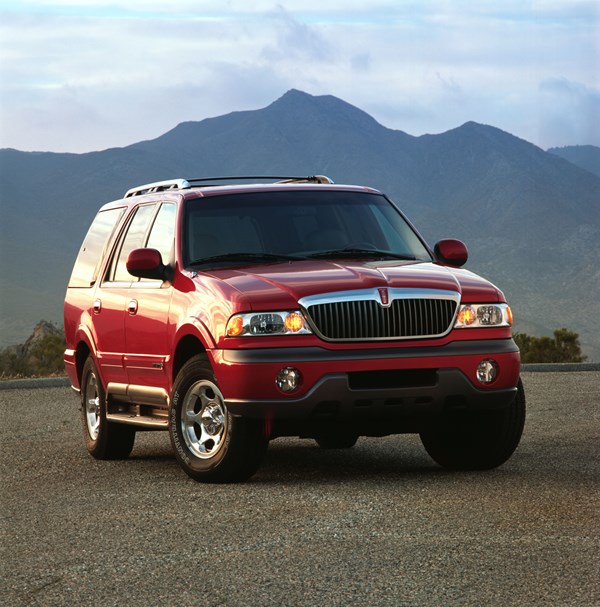Retrofuturism: J Mays Talks About Automotive Design
There are few people who have a better, hands-on perspective of automotive design than J Mays. So who better to ask about why cars and trucks look the way they do when they do it?

Although J Mays is just 58 years old, he is arguably one of the deans of contemporary automotive design. Mays, Ford group vice president of Design and chief creative officer, started his career in 1980 at Audi in Ingolstadt after being graduated from Art Center in Pasadena. From Audi it was on to BMW in ’83, back to Audi in ’84, then from Germany to Simi Valley, CA, in ’89 as the chief designer for Volkswagen of America. He joined Ford in 1997.
Mays has had a hand in concepts including the Audi AVUS and the VW Concept 1 (which became the New Beetle, with but comparatively minor modifications), in production vehicles ranging from the Aston Martin DB 9 to the Ford F-150.
One of the characteristics of Mays is that he is thoughtful, and so rather than seeing cars and trucks as discrete things removed from their environment, he puts them into their context, recognizing that there is essentially a zeitgeist that informs what a vehicle is, but at the same time understanding that as a man tasked with leading the design direction for one of the leading automotive companies in the world, he can have an effect on what the vehicles can be, what they can represent, what they can signify.
In 2002, Mays’ work was the subject of an exhibition at the Museum of Contemporary Art in Los Angeles; it was titled “Retrofuturism: The Car Design of J Mays.” Earlier this year we sat down with J Mays and asked him to provide a retrospective, to review automotive design in America since the 1950s. You’ll see the kind of keen perspective that Mays brings to bear on why cars look as they look at certain periods of time.
Postwar: To Infinity and. . .
“Cars and car design are an outgrowth of the cultural mindset of the decade that they are in. Look at the cultural mindset of postwar America, of our country coming out of the Second World War. There was unbridled optimism, reflected in culture in general and cars in particular. When we look back the cars look like space craft and jet aircraft, and have loads of chrome on them. That was a reflection of the optimism of the time. I think it was possibly a time when car designers didn’t worry about making absolute fools of themselves. They were just there to be creative and almost anything would go. There was nothing about the future that was pessimistic, it was all optimistic.”
1955 Ford Futura Concept

The 1960s: Scare Your Mother
“If you go back to the ‘60s and look at the culture, there were assassinations, war, riots, drugs, and the sexual revolution. It was a rebellious decade. How that manifested itself in automotive terms was through muscle cars, which to my mind were the most rebellious kind of cars you could do—the largest possible engine stuck in the smallest possible car to scare the hell out of your mom. What could be more fun?”
1969 Boss 429 Mustang

Sea of Gray
Move forward to the ‘70s, and it was all doom and gloom and gas prices. Look at the gray sea of automobiles that came out of the 70s because there was nothing going on in our culture that was particularly optimistic.”
1974 Mustang II

What Would Wolfe Drive?
“I came out of school in January 1980, just about the time Ronald Reagan gave his famous Soviet Union “Evil Empire” speech. We set off on the decade of the Bonfire of the Vanities. That was the decade that gave us yuppies, BMW, and three Japanese luxury brands. It was the decade where everyone thought greed was not so bad, that it was fun. Look at the cars produced in the 80s and there is a lot of hedonism.”
1981 Lincoln

Ascending Mt. Costco
“In the ‘90s it became more about lifestyle. The way that manifest itself in cars was through sport utility vehicles—shorthand for “I have a particular way of seeing myself, and oh, by the way, I’m very sporty. I drive up high because I have all this sporty gear that I have to take places.’ And actually they’re going to Costco, but it didn’t matter.”
1998 Lincoln Navigator

Choice
“In the last 10 years or so, since 2000, I think it’s been all about everything—about the choice. There was a period of time when modern design was seen to be German. I don’t think that’s the case anymore. What’s been interesting about the last 10 years is that the world is more design-savvy than in the previous 50 years. There is no right or wrong to design, just different points of view. If you ask 3 different people about their favorite or what the best motorcycle is, you’ll get three different answers. Some will say a Ducati. Some will say a Japanese crotch rocket. Some will say a Harley. They’re all right. It’s what’s right for them. In the automotive world, there is a spectrum of opportunities.”
2013 Fusion Hybrid

The Future
“I’ve been working really hard with the Ford brand over the last five years and said ‘Damn it, we’re going to make beautiful cars. I’m sick of doing appliances; I’m sick of doing mediocre cars that are milk toast. It can’t be that much more effort to do really gorgeous sheet metal—and it isn’t. I will leave the Ford brand with a legacy and a point of view of what it stands for. I hope that point of view will be that we deliver a beautiful, gorgeous premium experience to our mainstream customers.”
Lincoln MKC concept



.jpg;width=70;height=70;mode=crop)